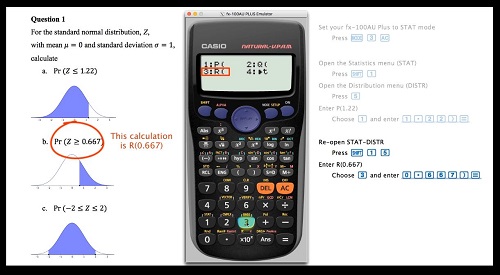Mixing Mathematical Ingredients: Exploring the Calculator Soup – In the realm of mathematics, calculators serve as indispensable tools, aiding both students and professionals alike in navigating through complex equations, intricate formulas, and challenging mathematical concepts. However, beyond their utilitarian function lies a fascinating world where these devices not only compute numbers but also offer a metaphorical ‘soup’ of mathematical exploration. In this article, we delve into the depths of this metaphorical calculator soup, uncovering the various ingredients that make it both intriguing and essential in the study and application of mathematics.
Understanding the Basics
At its core, a calculator is a device designed to perform mathematical calculations efficiently. From simple arithmetic operations like addition and subtraction to more complex functions such as logarithms and trigonometric calculations, calculators have evolved over the years to accommodate a wide range of mathematical tasks. Whether in the form of handheld devices, software applications, or built-in functionalities within other electronic devices, calculators have become ubiquitous in modern society.
Beyond Arithmetic: Exploring Functions and Graphs
One of the key ingredients in the calculator soup is its ability to handle functions and graphs. Advanced calculators allow users to input equations representing various mathematical functions and visualize their graphical representations. This capability is particularly useful in fields like calculus, where understanding the behavior of functions and their corresponding graphs is essential. Through tools like graphing calculators, students and professionals can explore concepts such as derivatives, integrals, and optimization with ease.
Solving Equations and Systems
Another essential component of the calculator soup is its ability to solve equations and systems of equations. Whether linear or nonlinear, algebraic or transcendental, calculators equipped with specialized algorithms can provide solutions to a wide array of mathematical problems. This functionality is invaluable in fields like engineering, physics, and economics, where equations often arise as part of larger modeling or analysis tasks. By leveraging the computational power of calculators, users can streamline the process of solving equations and focus on interpreting the results.
Statistical Analysis and Data Visualization
In addition to their prowess in solving mathematical equations, calculators play a significant role in statistical analysis and data visualization. With features such as statistical functions, regression analysis, and probability distributions, calculators enable users to analyze datasets, draw inferences, and make informed decisions based on empirical evidence. Moreover, through graphical representations like histograms, scatterplots, and box plots, calculators facilitate the visualization of data, allowing for deeper insights into patterns, trends, and relationships.
Programming and Customization
One of the most versatile ingredients in the calculator soup is its programmability and customization options. Many modern calculators support programming languages or scripting environments that enable users to create custom functions, automate repetitive tasks, and extend the capabilities of the device beyond its pre-installed features. This programmability opens up a world of possibilities for educators, researchers, and enthusiasts to tailor their calculators to suit specific needs and preferences, fostering creativity and innovation in mathematical exploration.
Educational Applications and Pedagogical Tools
In the realm of education, calculators serve as invaluable pedagogical tools, empowering students to engage with mathematical concepts in interactive and dynamic ways. Whether in the classroom or during self-study, calculators provide scaffolding for learning, offering immediate feedback, visual representations, and opportunities for exploration and experimentation. Moreover, by integrating calculators into curriculum design and instructional practices, educators can enhance students’ mathematical fluency, problem-solving skills, and conceptual understanding across various domains of mathematics.
Conclusion
The metaphorical calculator soup represents a rich and diverse landscape of mathematical exploration, where tools and functionalities converge to facilitate learning, problem-solving, and discovery. From arithmetic calculations to graphing functions, from solving equations to analyzing data, calculators play a multifaceted role in the study and application of mathematics. As technology continues to evolve, so too will the capabilities of calculators, further enriching the mathematical experience for students, professionals, and enthusiasts alike. In this ever-expanding universe of mathematical possibilities, the calculator remains an indispensable companion, ready to help us navigate through the complexities of numbers, equations, and ideas.

